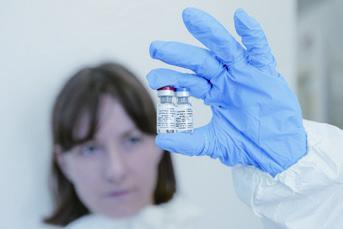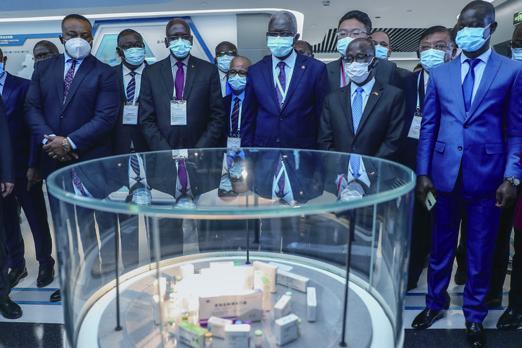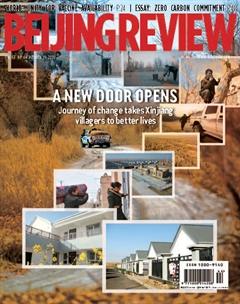New Band of Brothers
By Zha Daojiong
To deal with the novel coronavirus dis- ease (COVID-19) pandemic, over 170 economies formed a multilateral arrangement, known as the Covax Facility, in June to secure vaccines in a cost-effective, targeted way.
Proposed by the Global Alliance for Vaccines and Immunisation, Coalition for Epidemic Preparedness Innovations and the World Health Organization (WHO), the facility will seek investment to secure approved vaccines for the most at-risk groups in all participating economies. The Covax Facility is probably the biggest multilateral cooperation initiative since the Paris Agreement on climate change in 2015.
China joined the Covax Facility on October 8, a follow-up on its commitment that any vaccine developed domestically will be made available as an international public good, especially for developing countries. It is also working with a dozen other economies to develop a COVID-19 vaccine via clinical tests and joint manufacturing and distribution.
By October, four out of the nine candidate vaccines in the third and final stages of clinical trial were from China.
A long project
Scientists from around the world started developing vaccines or therapies as soon as Chinese scientists released the sequence of the COVID-19 genome on the Internet in January.
Vaccine development is normally a lengthy process. It can take as long as a decade to ensure a new vaccine is safe and effective before it is approved for public use. So far, close to 100 vaccines are in different stages of development. Once the national regulatory approval is given, WHO will activate its evaluation mechanism for the vaccines international distribution.
The Covax Facility will pool investment from the participants so that the developers of successful vaccines can begin mass production as soon as possible. The products will then be distributed in a fair and equitable manner among the members.

The higher-income participants will finance the vaccines from their own public finance budgets. They will partner with lower-income members supported by an advance market commitment (AMC) to secure $2 billion by the end of 2020. Contributions to the AMC are expected to come from sovereign donors, philanthropic organizations and the private sector. If the AMC meets its fundraising target, the 92 lower-middle- and low-income participating economies in the facility will benefit.
As China is in the upper tier of middleincome economies on a per-capita basis, it is going to be a self-financing participant. It has reportedly offered to purchase doses to cover the needs of 1 percent of its 1.4-billion population.
This is a sensible move, as China would probably be capable of meeting its needs through its own manufacturing capacities. By keeping open the option of joining the purchase pool, China is in effect making a contribution to the collective effort to increase the COVID-19 vaccine manufacturing potential.
The Covax Facility is an evolving endeavor. On the one hand, its participants represent more than 70 percent of the worlds population, including more than half of the Group of 20 economies. Their recovery from the pandemic is essential for the ongoing global economic contraction to end.
On the other hand, the envisioned vaccine delivery capacity is meant for the at-risk segments of those populations. Policies for the prioritization of a vaccine rollout within the economies will be led by WHO. With WHOs expertise in advising economies in need of immunization through vaccination, having the Covax Facility before the products are available is a foresighted approach.

Other challenges
However, to make a safe and effective vaccine available to large segments of the worlds population as early as possible, in addition to the Covax Facility, several additional issues need to be addressed.
First, to help bring down per-dose costs, the vaccine developers should be encouraged to enlist manufacturing capacities available worldwide. For example, the Developing Countries Vaccine Manufacturers Network should be roped in to enlarge supplies. If middle- and low-income economies with qualified manufacturers are part of the effort, it will reduce cost and time for cross-border transportation of the products.
Second, vaccine developers demand to protect their intellectual property rights has to be addressed. Economies wishing to make use of public health exceptions allowed under the World Trade Organizations Trade-Related Aspects of Intellectual Property Rights provisions should ensure that any production under the emergency compulsory license is predominantly for domestic use. This can assuage developers worries about potential investment loss.
COVID-19 is a national emergency for virtually all economies. Governments of economies with the capacity to produce safe and effective vaccines should see the benefit in encouraging their researchers and manufacturers to be creative in lowering the costs of the products. After all, effective, safe and timely immunization services will help restore normalcy worldwide, which in turn is in the interest of every economy.
Third, to deal with the negative effects of any vaccine nationalism, it should be ensured that the decisions to procure a particular product are made on the basis of science rather than the origin country of the product. Vaccine provision can and in many cases is already part of diplomacy. Yet in the end, there is no higher purpose than giving priority to life.
Last but not least, to prevent any waste of global vaccine manufacturing and distribution capacities, the global supply chains for the needed ingredients should be kept open and free from interference. Faced with the unprecedented global public health challenge, there can be no justification for hoarding.

